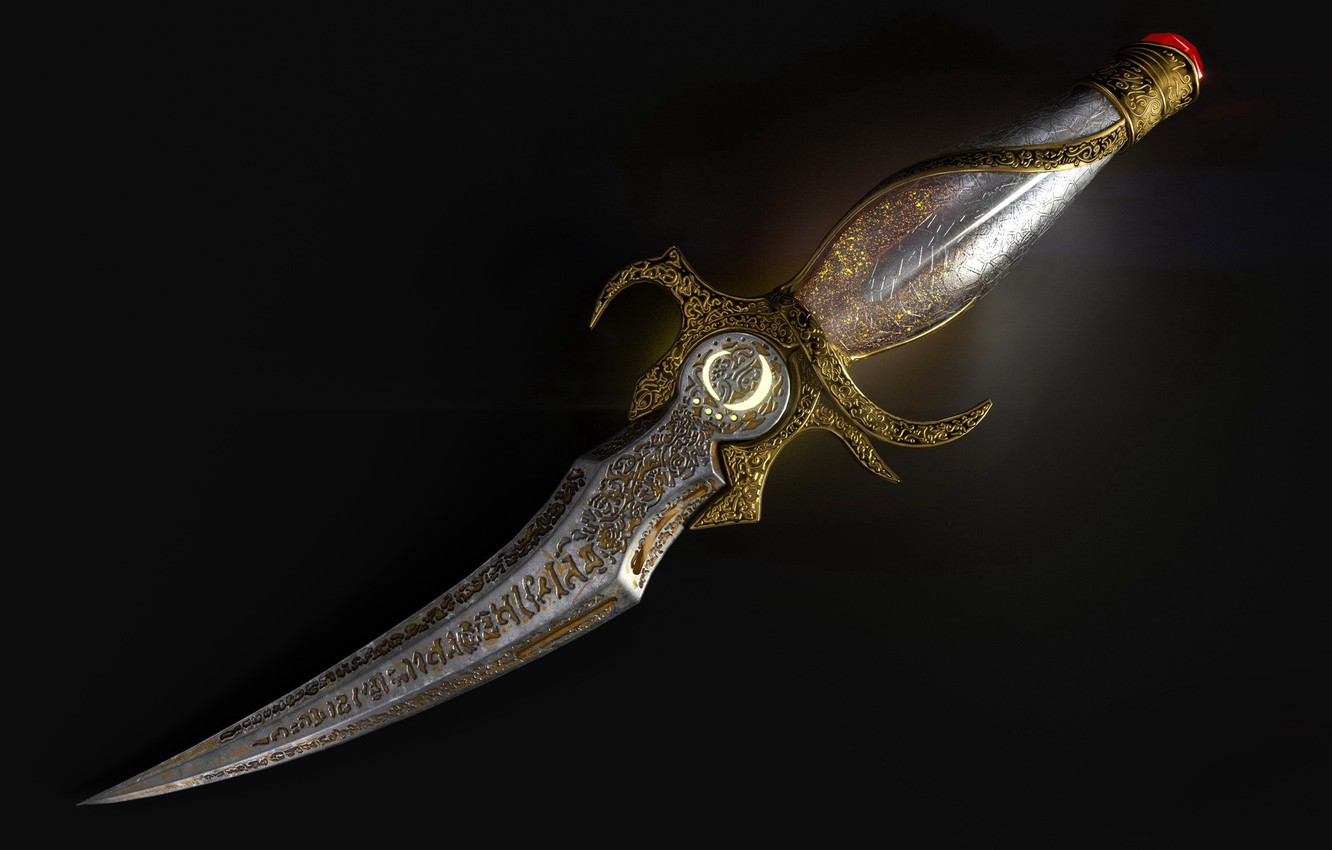
A dagger is a knife with a very sharp point and usually two sharp edges designed as a thrusting or stabbing weapon.
It is ostensibly the diminutive of the sword, though in ancient and medieval times the distinction between a long dagger and a short sword was often obscure.
From ancient times, warriors came to the conclusion that they needed some short stabbing weapon that they could always carry around, and that is convenient to use in situations where it is not possible to move with a sword, club or spear. A popular opinion is that the first daggers were made of wood and bone. Originally the unprocessed horns of animals were used as daggers.
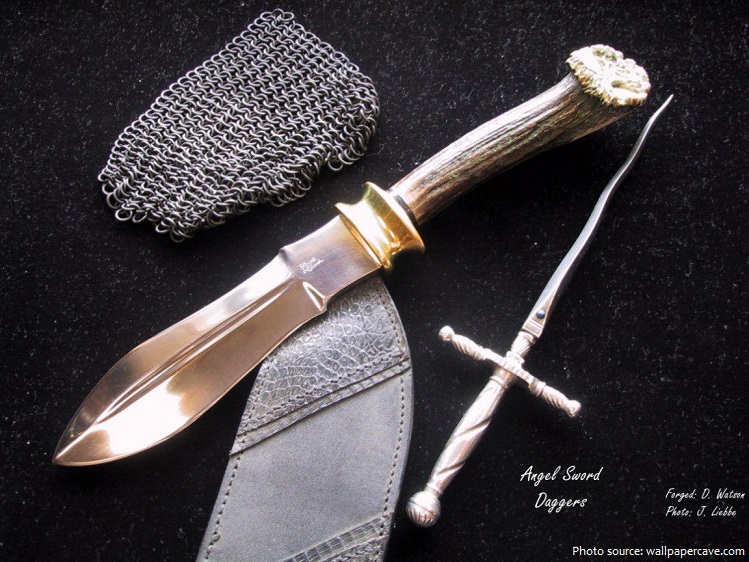
Copper daggers appeared first in the early Bronze Age, in the 3rd millennium BC, and copper daggers of Early Minoan III (2400–2000 BC) were recovered at Knossos.
In ancient Egypt, daggers were usually made of copper or bronze, while royalty had gold weapons. At least since pre-dynastic Egypt, (c. 3100 BC) daggers were adorned as ceremonial objects with golden hilts and later even more ornate and varied construction.
One of the earliest objects made of smelted iron is a dagger dating to before 2000 BC, found in a context that suggests it was treated as an ornamental object of great value. Found in a Hattic royal tomb dated about 2500 BC, at Alaca Höyük in northern Anatolia, the dagger has a smelted iron blade and a gold handle.
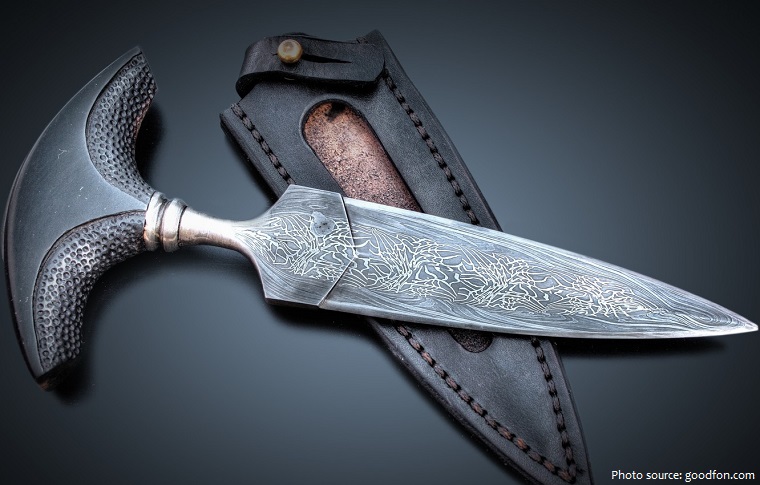
The artisans and blacksmiths of Iberia in what is now southern Spain and southwestern France produced various iron daggers and swords of high quality from the 5th to the 3rd century BC, in ornamentation and patterns influenced by Greek, Punic (Carthaginian), and Phoenician culture.
During the Roman Empire, legionaries were issued a pugio, a double-edged iron thrusting dagger with a 18 to 30 cm (7 to 12 inches) blade.
The term “dagger” appears only in the Late Middle Ages, reflecting the fact that while the dagger had been known in antiquity, it had disappeared during the Early Middle Ages, replaced by the hewing knife or seax.
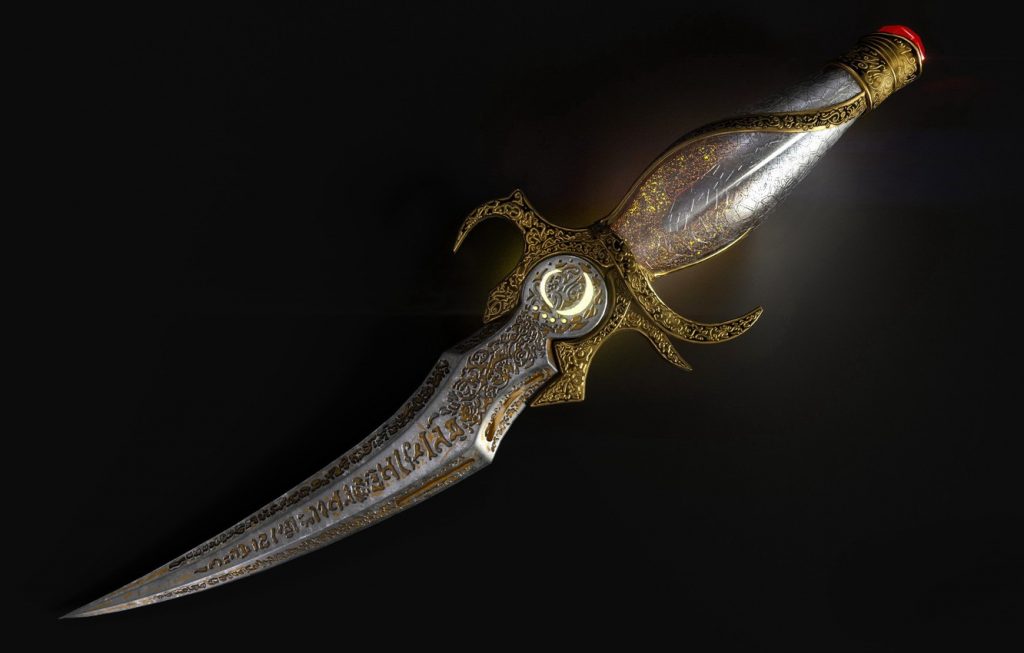
The dagger reappeared in the 12th century as the “knightly dagger”, or more properly cross-hilt or quillon dagger, and was developed into a common arm and tool for civilian use by the late medieval period.
The knightly dagger evolved into the larger baselard knife in the 14th century. During the 14th century, it became fairly common for knights to fight on foot to strengthen the infantry defensive line.
In the 16th century a school of fencing developed in which a specially designed dagger with a large guard was held in the left hand and used for parrying.
During the Renaissance Age the dagger was used as part of everyday dress, and daggers were the only weapon commoners were allowed to carry on their person.
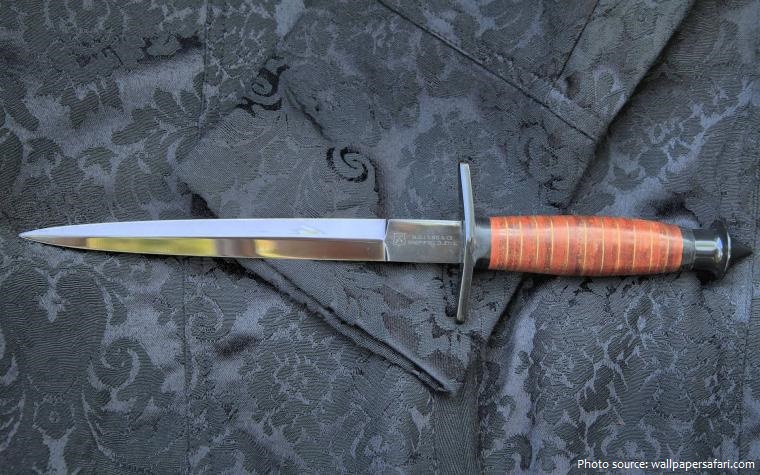
In English, the terms poniard and dirk are loaned during the late 16th to early 17th century, the latter in the spelling dork, durk (presumably via Low German, Dutch or Scandinavian dolk, dolch, ultimately from a West Slavic tulich), the modern spelling dirk dating to 18th-century Scots.
WW1 trench warfare caused daggers and fighting knives to come back in play. They also replaced the sabres worn by officers, which were too long and clumsy for trench warfare. They were worn with pride as a sign of having served front line duty.
Daggers achieved public notoriety in the 20th century as ornamental uniform regalia during the Fascist dictatorships of Mussolini’s Italy and Hitler’s Germany. Dress daggers were used by several other countries as well, including Japan, but never to the same extent.
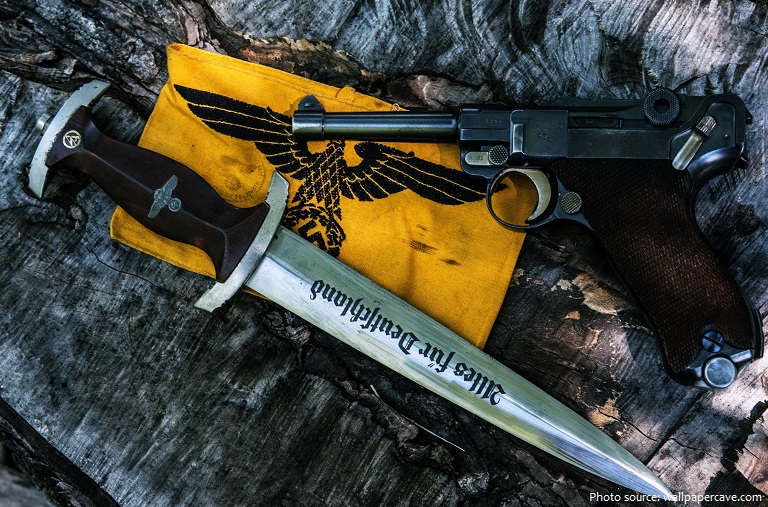
The dagger is symbolically ambiguous.
For some cultures and military organizations the dagger symbolizes courage and daring in combat. Daggers are therefore commonly used as part of the insignias of elite military units or special forces, such as the US Army Airborne Special Operations unit or the Commando Dagger patch for those who have completed the British All Arms Commando Course.
However, daggers may be associated with deception, stealth, and/or treachery due to the ease of concealment and surprise that someone could inflict with one on an unsuspecting victim, and indeed many assassinations have been carried out with the use of a dagger, including that of Julius Caesar. A cloak and dagger attack is one in which a deceitful, traitorous, or concealed enemy attacks a person.
The largest dagger measured 91.50 cm (36 in) in length and 21.60 cm (8.5 in) at its widest point and was achieved by Oman Telecommunications Company (Omantel) in Muscat, Oman, on 12 November 2011. The dagger was produced as a gift to His Majesty Sultan Qaboos Bin Said, to celebrate his 40 years of accession. The dagger was a Khanja- a traditional Omani dagger and Oman’s national symbol. The dagger was made from wood and silver, with ornate carvings and mouldings.
